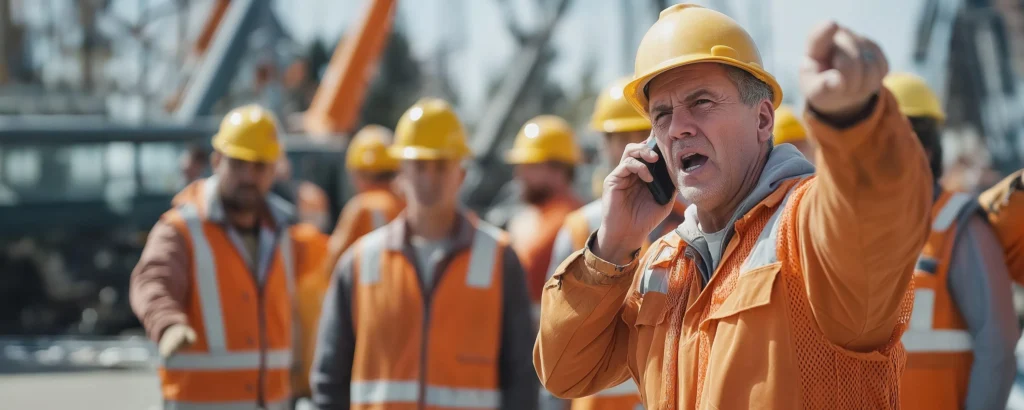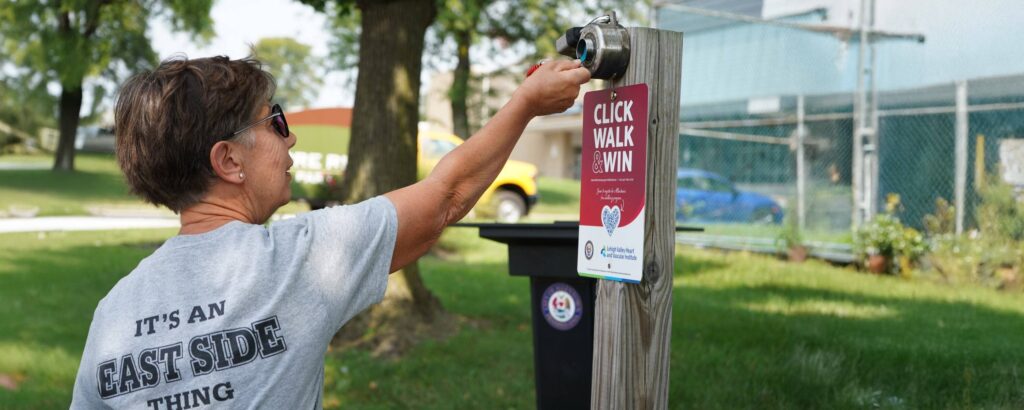The Occupational Safety and Health Administration (OSHA) requires construction businesses to have a safety program in place for your employees. Though your safety and health program might differ from the one that another contractor has, as long as it’s effective, you’ll greatly reduce the risk of an employee sustaining a major injury. Plus, you’ll be on OSHA’s good side when they do a routine inspection and see that your safety protocols are up to standard—and their future inspections on your job sites will be quicker and simpler.
OSHA’s Safety Training and Education standard sums it up this way: “The employer shall instruct each employee in the recognition and avoidance of unsafe conditions and the regulations applicable to his work environment to control or eliminate any hazards or other exposure to illness or injury.”
OSHA does offer its own outreach training program for contractors. This program is a basic or more advanced introduction to job site safety for new employees or supervisors to be built upon and refreshed with ongoing safety training.
So isn’t OSHA’s official safety training enough?
Most contractors know well that an initial new hire safety training, no matter how comprehensive, won’t be enough to ensure workers keep safety top of mind every day or train them on specific job site hazards.
As OSHA’s Outreach page states, “Outreach training does not fulfill the training requirements found in OSHA standards. Employers are responsible for providing additional training for their workers on specific hazards of their job as noted in many OSHA standards.”
Recurrent, informal safety meetings—often called toolbox talks, toolbox meetings, tailgate safety meetings or even safety shares—are common methods of educating and training employees on safety and health on an ongoing basis. The primary goal of these is to avoid accidents and injuries, as well as OSHA audits and fines.
What is a toolbox talk?
A toolbox talk is an informal group discussion that focuses on a specific safety issue. As opposed to a project safety kick-off meeting or pre-construction meeting, a toolbox talk isn’t a formal meeting with a broad agenda. More for safety maintenance and specifics rather than a high-level overview, toolbox talks can be held monthly, weekly or even daily.
According to StackExchange.com, the name “toolbox talk” comes from the idea of a crew gathering around a toolbox for one of these casual conversations, or possibly from the idea of the speaker standing on a toolbox.
What is a safety share?
Sometimes the terms toolbox talk and safety share are used interchangeably. By definition, a safety share is even more informal than a toolbox talk. It’s an impromptu comment by a worker about a safety issue or situation on the job site that sparks a discussion.
On today’s busy job site these off-the-cuff “safety moments” are rare and are certainly hard to document. And with our current safety standards, employers can’t depend on safety shares happening spontaneously, much less rely on workers being educated that way.
For this reason, some contractors get the ball rolling on safety shares with a supervisor reading aloud from a prompt about a safety issue and letting workers chime in about their experiences. This is more like a toolbox talk.
What does a toolbox talk entail?
A toolbox talk is a perfect opportunity to provide training or a refresher on safety measures relevant to the job site that will help you stay compliant with state or federal OSHA regulations. It’s also a great chance to introduce new safety policies your business is implementing, or any changes to the job site.
Typically led by a supervisor or project manager, a toolbox talk often lasts for only 10 or 15 minutes. Toolbox talks are more effective if they can be broken out into small groups, such as by trade or task. A toolbox talk is focused and practical, and its topic is clearly applicable to the project at hand.
What are some toolbox talk topics?
Topics of toolbox talks can be anything from basic electrical safety to ladder, forklift or fire safety. A demolition team’s toolbox talk could focus just on lead paint removal.
If an accident occurs, the next day’s safety meeting should address the safety issues around the accident, and how it could have been avoided. If there’s inclement weather, a toolbox talk could focus on what special precautions need to be taken.
The following are some topics that are ideal for toolbox talks, especially when they are relevant to that day’s or week’s work on the job site.
General safety and health provisions
Again, toolbox talks aren’t meant to be high-level safety overviews. They are meant to engage workers by staying short, practical and highly relevant to the work they are doing.
General safety and health provisions wouldn’t be an ideal title for a toolbox talk, therefore. But there are many subtopics that fall under this that you can bring up when you don’t have a more pressing subject for the day, such as Medical and First Aid, Preventing Falls in Construction, or Hand and Power Tools.
Personal Protective Equipment (PPE)
Personal Protective Equipment, or PPE, is central to safety in construction. When clothing or equipment can be worn that will have lasting safety effects the wearer isn’t even conscious of, all the better.
A safety meeting about PPE should focus on the types of PPE that are needed and required by your state at the job in question. For example, head protection is worn on almost every type of construction site, and if you see workers taking off their hard hats too often, then it’s time for a refresher on why they need them.
Respiratory protection, on the other hand, may or may not be needed at your job site, although the current COVID-19 pandemic may make a minimal face covering necessary for all workers. Respiratory protection comprises all kinds of respirators—from single-strap dust masks with little protective power to approved filtering facepieces such as N-95 masks, which filter out dusts and mists but not gases, to full-face respirators or self-contained breathing apparatuses.
Hazard Communication / GHS
In 2013, OSHA revised its hazard communication standard to align with the international Globally Harmonized System (GHS) of classifying chemicals. There are a handful of OSHA-created toolbox talks around this topic that are still relevant today for many construction businesses.
A toolbox talk might define the symbols and statements found on labels of hazardous chemicals as required by OSHA today. Another talk could be around the Safety Data Sheets that OSHA now requires to accompany any potentially hazardous product in order to comply with GHS, and what those sheets contain.
Many chemicals are hazardous at certain exposure levels, or without proper protection. For example, asphalt fumes released in road paving, roofing and concrete work have been determined by the U.S. government to be toxic at a concentration greater than 5 miligrams per cubic feet of air during any 15-minute period. So if you’re involved in one of those activities, a toolbox talk could cover possible respiratory protection, symptoms of overexposure, first aid for asphalt contact or exposure, and so on.
Fire Protection and Prevention
Almost 4,000 fires happen on construction sites every year, according to the National Association of State Fire Marshals. Cooking equipment and discarded cigarettes cause many construction fires, so fire protection and prevention is a worthwhile toolbox talk topic on any job site. Unsurprisingly, hot or electrical work are also leading causes.
The Construction Fire Safety Coalition provides resources that can serve as material for toolbox talks. You can also center a talk around fire extinguisher do’s and don’ts, fire safety exits at the job site, or preventing fires from electrical cords.
Lockout/Tagout – The control of hazardous energy
Electrical, mechanical, hydraulic, pneumatic—those are just a few of the energy sources that can be hazardous to workers. During servicing or maintenance of a machine or piece of equipment, the unexpected release of stored energy can lead to injury or even death.
The fact that these incidents still occur despite OSHA’s lockout/tagout standards released 20 years ago is reason enough to include this topic in a toolbox talk. You could explain the need to educate those doing the maintenance and those working with or near the equipment, as well as everyone else on the job site. The next talk could provide more specifics of lockout/tagout (LOTO) devices and procedures.
Portable Tool and Equipment Safety
Hand and power tools may not be as deadly as steam valves or large machines, but they can present a serious danger if mishandled.
Your safety talk could zero in one something as specific as mounting an abrasive wheel properly on a portable hand-held grinder. Saws are all built differently, so a talk could focus on the type of saw that’s used the most on your job site, whether it’s a portable circular saw, radial arm saw or a hand-held jigsaw or something different.
Ladder Safety
Non-fixed, a.k.a. portable, ladders are treacherous if they aren’t properly positioned each time they are used. Workers moving fast may be tempted to skip this step, pardon the pun—so you need to remind them how essential it is.
Portable ladders come in two major types: self-supporting and non-self-supporting, which are often used in roofing. These further break down into more types. One toolbox talk could break down these different types, unless only one type is relevant to your job site.
Another talk could focus on a portable step ladder or portable extension ladder do’s and don’ts. Handouts with visual guides to proper ladder positioning can also be extremely useful.
Basic Electrical Safety
It goes without saying that electricity introduces major risks and hazards at a job site.
Giving workers some perspective on the dangers of electricity by describing how it can harm them—an electrical arc flash caused by a short circuit searing the lungs when inhaled, for example—can be a powerful lesson in working safely. You can follow this up with more specific toolbox talks about electrical boxes, power lines or double-insulated tools.
Grounding pins are often removed on power cords, which seems like a trivial example but presents a big hazard. You can host a toolbox talk to remind workers of this and discuss why the grounding pin is crucial to avoiding electrocution.
Basic Scaffold Safety
A scaffold is an elevated, temporary work platform. Common accidents involving scaffolds go beyond just falls to encompass injury from scaffold collapse, being struck by falling tools, and electrocution due to the proximity of overhead power lines.
There are myriad topics for scaffolding-focused toolbox talks. Before you’ve introduced scaffolds on your site you can start by talking about different types of scaffolding, then move to how to safely access scaffolds, or proper scaffold construction.
Fall Protection/Prevention
Falls are the leading cause of death in construction. In 2018 there were 320 fatal falls to a lower level out of 1,008 construction fatalities.
Most every construction site presents slip, trip and fall hazards. As for falling from heights, anyone working at even a six-foot elevation off the ground is at risk of a fatal fall.
Toolbox talks can center on slips and falls, which are the cause of many construction injuries. Or if much of the current project is being done at heights, you may want start with a refresher on fall arrest harnesses and their proper use. Remember: Everyone gets distracted or lazy sometimes, so refreshers on the basics of fall prevention are always useful, regardless of your crew’s experience levels.
Yard Hazards
Yard hazards refer to general safety hazards found in construction environs. Canada’s British Columbia Construction Safety Alliance (BCCSA) also offers free toolbox talk templates on a variety of subjects, including several in this category.
Excavating near gas lines? Working with or around heavy equipment? In danger of silica exposure? If any of these yard hazards make up part of your crew’s day, toolbox talks are in order.
Special Equipment Training
Another way to group and classify your toolbox talks is around special equipment that your project requires, and its safe usage.
An example of special equipment, according to BCCSA, is the chains, slings and hooks used to connect forklifts or other lifting devices to the load they’re bearing. These can comprise a toolbox talk by themselves to go over details about quality and use.
Other special equipment topics to focus on could include a cut-off saw, a forklift, working around propane tanks or even just the proper practice of mounting and dismounting heavy equipment.
Driving Tips, Transfers and Trailers
OSHA knew that motor vehicles, mechanized equipment and marine operations are dangerous enough to merit their own OSHA safety standard. Dedicating a talk to preventing backovers or even defensive driving is never too trivial or obvious.
BCCSA offers a free toolbox talk template on trailer safety, while OSHA provides a safety eTool on operating vehicles in construction—and ensuring they are in good working order before you do so.
There’s much to remember about safety when you work in construction, although toolbox talks allow managers to present the information in highly relevant, bite-size pieces. Just imagine: One five-minute toolbox talk that brings up a safety tip a worker didn’t know or had long forgotten might save a life.
ExakTime can help you monitor safety by ensuring you know which workers are on-site, allowing workers to communicate dangerous conditions through field notes, and allowing you to schedule impromptu or recurring toolbox talks so that no one misses them.
[blog_post_cta]


